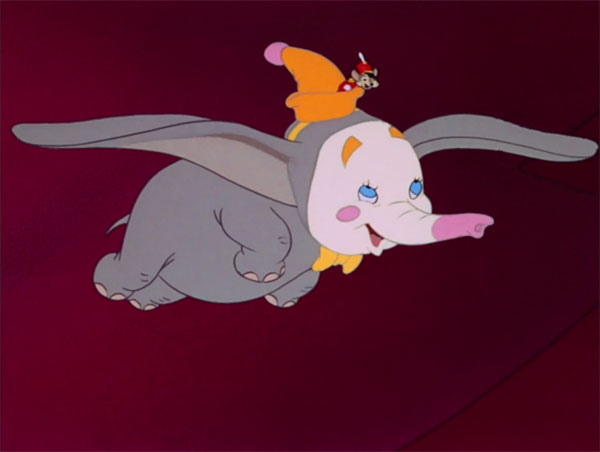
I’ll admit that I wasn’t that excited about this stop in my journey through the features of the Walt Disney Animated Studios. It’s been a long time since I’ve seen Dumbo, so I’ll definitely give it a fair chance here. The 64-minute feature had a much smaller budget than Snow White or Pinocchio, which removed the pressure to recoup the costs. It also was produced during the 1941 strike, which was brutal and changed Disney forever.
We also saw the 2019 release of Tim Burton’s take on the story, which had promise but felt like two movies packed into one. The Dumbo’s Flying Elephant attraction has kept the character well-known around the world, but how many of us check out the original movie? Burton’s adaptation wasn’t a financial success, which is rare for Disney’s live-action updates. What is it about this story that makes it less relevant today?
Dumbo also includes a controversial scene with a character actually named “Jim Crow” leading a memorable group of crows inspired by minstrel shows. I remember hearing their song “When I See an Elephant Fly” on Disney compilations when I was younger. Burton did not include the crows in his remake, which is understandable given his approach. Let’s travel back to the circus in 1941 and try to believe an elephant can fly!
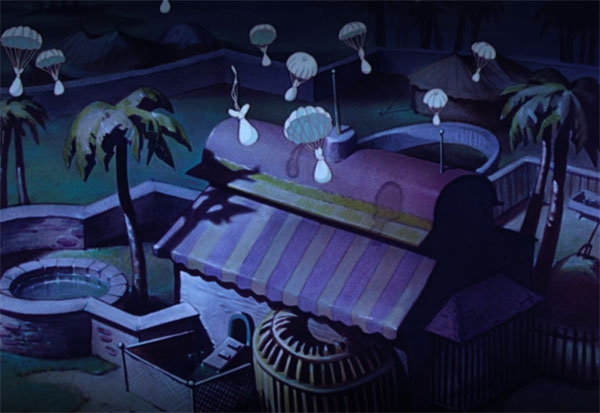
Here Come the Storks!
We begin with an unseen narrator proclaiming a grand speech while rain falls in front of us. A group of storks fly around in a big circle and prepare to deliver babies. I’m familiar with the folklore story that helps explain how babies arrive, but it’s still a strange opening. Our trip with the storks end in southern Florida (well before Walt Disney World’s arrival to Orlando). The destination is a circus where various baby animals meet their mothers. It takes a little while, but Mrs. Jumbo ultimately receives a cute baby elephant. The sweet meeting is undercut but the other elephants, who make fun of the young one’s large ears.
There’s a surprising level of nastiness among the other elephants (and later some kids) that bully Jumbo Jr. and call him Dumbo. That name sticks despite the way it speaks poorly about the young elephant. Kids pull on his ears and are just plain mean, which ultimately causes Mrs. Jumbo to be called a mad elephant. The other elephants are pompous and enjoy looking down what they refer to as a “freak”. It’s an obvious connector to school kids (and some adults) picking on someone that’s different.
The lost stork is notable for being Sterling Holloway, who would later voice Winnie the Pooh and Kaa in The Jungle Book. It’s hard to watch this scene and not think of those classic Disney characters. Another fun part of these early scenes is the Casey Jr. train, who struggles to clear the mountain. Its voice reminds me of The Reluctant Dragon where Robert Benchley learns how this sound works. I’m here for all the whimsical touches with Casey Jr. in these scenes!
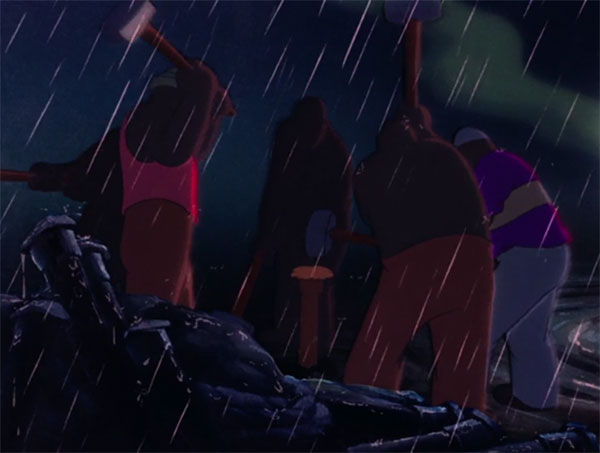
A Different Style of Animation
The most notable part of Dumbo’s style is the more limited backgrounds and flatter look. This relates to the choice to use watercolor paint instead of the typical approach to features. It still looks colorful but more closely resembles Disney’s animated shorts. Certain moments still capture the richer look we might expect from Disney. A good example is the “Song of the Roustabouts” scene after the circus reaches its destination. The images of laborers building up the structures combine with the memorable song to set the right tone.
Despite its short running time, Dumbo also feels episodic until we ultimately see the elephant fly. Much of the story is just meeting the characters and watching Dumbo take on various roles. The big moment that we all remember happens at the very end right before the credits. Before we reach there point, there a lot of quick moments as the circus travels along.
I should mention that the “Roustabouts” scene includes a group of African-American laborers, which is rare compared in this film. It also shows them doing hard labor on the railroad, which could bring slavery to mind. Lines like “We slave until we’re almost dead” add to that connection. It’s a quick scene, but it deserves a mention given the controversy about the crows.
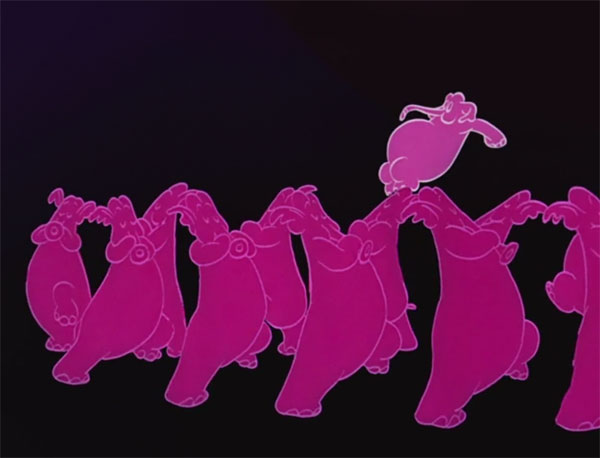
An Elephant Pyramid, Clowns, and Drunkenness
This circus is not an efficient production, with ideas thrown at the wall by The Ringmaster. The pyramid of elephants feels like a recipe for disaster within the tight quarters of the circus tent. They can’t find a good place for Dumbo, who ultimately becomes a clown and dives into a pie. That also seems like an unfortunate idea, but it does give the clowns ideas for a bigger payday.
The scene with the drunken clowns getting up the nerve to ask for a raise has direct connections to Walt Disney’s conflict with certain animators. The way the film presents them as for the lack of a better term, clowns, shows how Walt views that group. It’s worth reading about the 1941 strike, which changed Disney and its leader for good. This brief scene reinforces how angry Walt was towards the complaints from the animators.
The clowns’ alcohol sets up one of the wonderfully strange parts of any Disney film. When Timothy Q. Mouse an Dumbo get drunk and hallucinate, it’s such a weird turn in the story. The “Pink Elephants on Parade” scene feels more like a short out of Fantasia than part of this film. It’s a surreal and inventive segment that lasts for quite a while. Despite being an odd detour, I love that it’s part of this movie. It’s not the type of moment we’d see in a big animated film now.
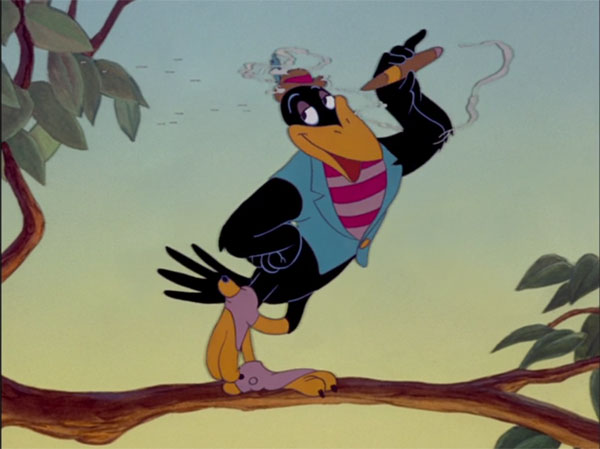
When I See an Elephant Fly
There were reports that Disney was going to cut the crows scenes on Disney Plus, and it’s hard to see how the story would work without them. The song “When I See an Elephant Fly” motivates Dumbo to grab his destiny. On the other hand, the scene also uses minstrel stereotypes and has a lead named Jim Crow. Cliff Edwards voiced that character and performed the song along with the African-America Hall Johnson choir. I appreciate that Disney retained this scene despite the controversy.
Another key part of Dumbo’s history is the start of World War II during its production. The ridiculous image of the “Dumbombers for Defense” in the final montage fits because of the fight that was happening. The United States hadn’t entered the war at that point, but it wouldn’t be long before Pearl Harbor later that year. It’s worth going frame by frame through the quick closing scene to catch all the fun references.
I enjoyed catching up with Dumbo, but it didn’t resonate as strongly as some of the others. The exception is “Baby Mine”, which is a classic Disney song. As a parent, it’s easy to identify with how much Mrs. Jumbo misses her child. There’s a warmth to this moment that’s not as strong in the rest of the movie. The shorter running time and lower budget would continue during the war and beyond in the 1940s. This movie’s financial success revealed a path forward for Disney in a difficult time period.
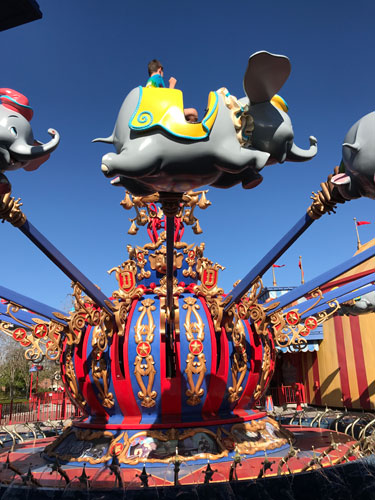
Dumbo The Flying Elephant
It’s not a coincidence that Dumbo the Flying Elephant is part of every Disney resort around the world. It’s a classic attraction that takes a typical spinner and makes it something more. What’s strange is trying to determine why Dumbo stands out from similar rides. Silver Dollar City even has a very similar elephant ride, and it’s fun but not the same experience. This may just be the Disney gene talking; a lot relates to nostalgia from early trips.
At Walt Disney World, Dumbo’s newer location in Storybook Circus feels weird yet does avoid the long lines of the prior version. The waiting area is a bit much with kids going wild in a small space, but it helps. I should also mention the Casey Jr. Circus Train at Disneyland and Disneyland Paris. It’s a fun ride for the entire family through Storybook Land.
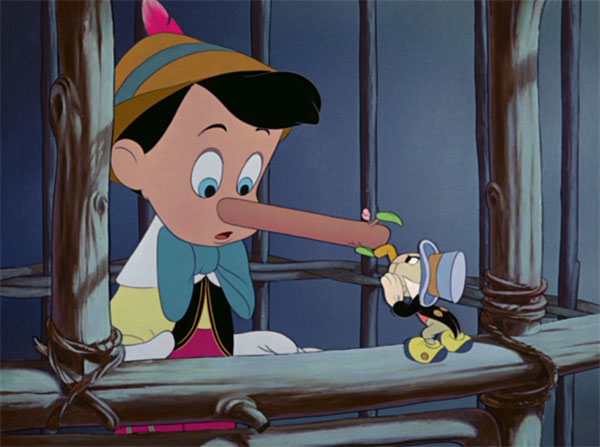
Related Articles: Dumbo
Snow White and the Seven Dwarfs (Disney Animation #1)
Pinocchio (Disney Animation #2)
Fantasia (Disney Animation #3)
The Reluctant Dragon (Disney Animation #4)
This post contains affiliate links. Making any purchase through those links supports this site. See full disclosure.



Great review, Dan. It made me think about how in Dumbo, Pinocchio, and Bambi, the protagonist is a little child who is innocent and pure, often alone, and must endure great hardships that are beyond his control or understanding. The Lion King is similar, but Simba is far less alone, and grows up about 2/3 of the way through, so he’s wiser and more capable by the end. That passage of time is actually pretty rare for a Disney animated movie, isn’t it? The only other one I can think of is The Fox and The Hound. You could say Princess and the Frog too, but that was more of a prologue to the movie. The “trodden-on innocent” films are some of the hardest to watch, as far as being heart-wrenching goes. When I was a child (in a happy, stable home) watching those films, they hinted at how dark the adult world could be.
Thanks Melanie! Good points about the early Disney films and how tough they can be. I even think about Snow White, who’s chased by the huntsman, has a terrible experience in the woods, and then is poisoned by the Queen. It’s a scary world out there in early Disney films!